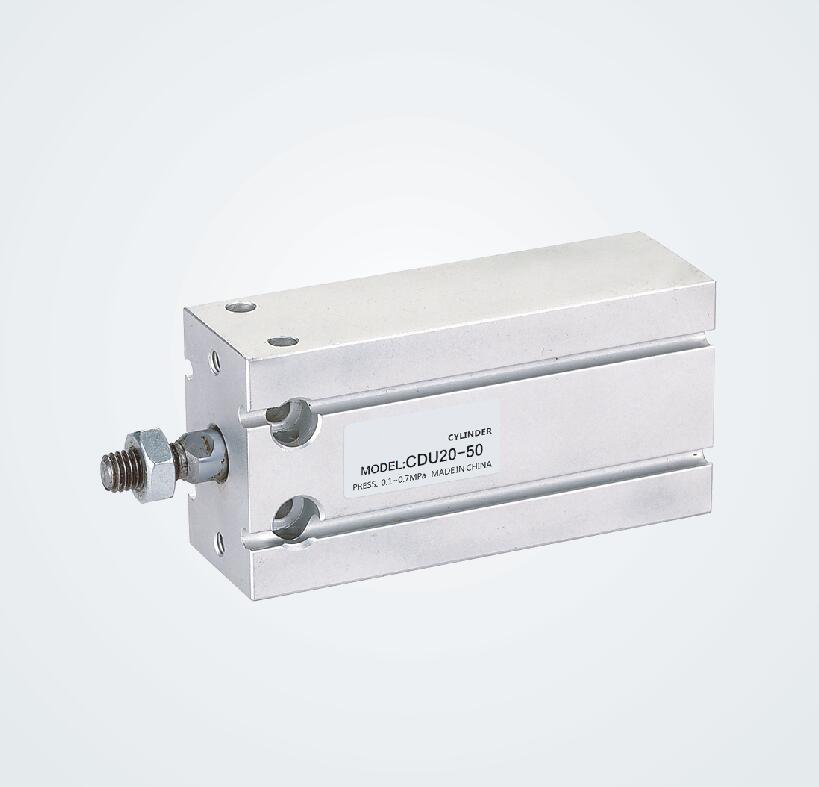In today’s world of industrial automation, the pneumatic air cylinder is a true workhorse. These devices are valued for being clean, fast, and easy to maintain, making them the preferred choice in industries like packaging, automotive, and electronics. But what makes a pneumatic air cylinder tick? What are the key control components that ensure smooth and reliable performance?
In this article, we’ll explore the essential parts of a pneumatic air cylinder, explain their functions, and share some tips for choosing the right solution for your business. If you’re looking for ways to boost efficiency or reliability in your factory, you’re in the right place!
Basic Structure and Working Principle of Pneumatic Air Cylinder
A pneumatic air cylinder may look simple, but every part plays a vital role. Here’s a quick overview of its main components:
- Cylinder Barrel: The main body that holds the pressure and guides the piston’s movement.
- Piston: Moves back and forth inside the barrel, powered by compressed air.
- Piston Rod: Connects the piston to external machinery, transferring force.
- End Caps: Seal both ends of the cylinder to maintain pressure.
- Seals: Prevent air leaks and keep the system efficient.
When compressed air enters the cylinder, it pushes the piston, creating linear motion. This action drives the attached machinery. Understanding this basic principle helps you select and maintain your pneumatic air cylinder more effectively.
Key Control Components Explained
1. Piston & Piston Rod
The piston is the heart of the pneumatic air cylinder. Its design and material directly affect performance and lifespan. High-quality piston rods are usually made from alloy steel with a chrome finish for durability and corrosion resistance. A good piston rod means less downtime and lower maintenance costs.
2. Seals & Guide Rings
Seals ensure the pneumatic air cylinder is airtight, while guide rings keep the piston rod moving smoothly. Common seal materials include fluororubber and polyurethane, chosen for their resistance to wear and harsh environments. Never underestimate these small parts—they’re crucial for reliability and efficiency.
3. End Caps & Tie Rods
End caps close off the cylinder and withstand internal pressure. Tie rods hold the structure together and add strength. Tie rod cylinders are easy to maintain, while rodless designs save space. Choosing the right structure can make your equipment more stable and efficient.
4. Cushioning Devices
Cushioning devices reduce impact and noise at the end of a stroke, protecting both the cylinder and your machinery. Many modern pneumatic air cylinders use self-adjusting cushioning for smooth operation, regardless of load or speed. Imagine your equipment running quietly and smoothly—much better, right?
5. Sensors & Position Sensing
In the age of automation, precise control is a must. Sensors like magnetic switches and proximity sensors provide real-time feedback on the piston’s position. This allows for quick adjustments and smarter automation, whether you’re assembling electronics or sorting packages.
6. Tubing & Fittings
Reliable air supply is essential for any pneumatic air cylinder. Quality tubing and fittings prevent leaks and pressure drops, ensuring your system runs smoothly. Paying attention to these details can make a big difference in overall performance.
Common Types and Applications of Pneumatic Air Cylinders
Here’s a quick look at some popular types and where they shine:
| Type | Features | Typical Applications |
|---|---|---|
| Single-acting cylinder | Simple, one-way action | Clamping, basic push/pull tasks |
| Double-acting cylinder | Moves in both directions | Assembly lines, robotic arms |
| Rotary cylinder | Provides rotary motion | Sorting, positioning mechanisms |
From packaging machines to automotive assembly, pneumatic air cylinders are everywhere. Their versatility makes them a smart choice for many industries.
Selection Tips and Frequently Asked Questions
Choosing the right pneumatic air cylinder doesn’t have to be complicated. Consider these factors:
- Load: Make sure the cylinder can handle your required force.
- Stroke Length: Match the cylinder’s movement range to your application.
- Environment: Think about temperature, moisture, and possible contaminants.
- Mounting: Select a style that fits your machine and space.
Common issues like air leaks or sluggish movement usually come down to worn seals or unstable air supply. Regular maintenance and careful selection are your best defense.
Although small, the pneumatic air cylinder is a big player in industrial automation. Understanding its key control components helps you make better choices and keep your equipment running smoothly. If you’re searching for high-quality, customized pneumatic air cylinder solutions, we’re here to help. Our expert team offers one-on-one technical support to ensure your project’s success.
Ready to improve your production line? Contact us now for a free consultation or to request a quote on pneumatic air cylinders tailored to your needs!


